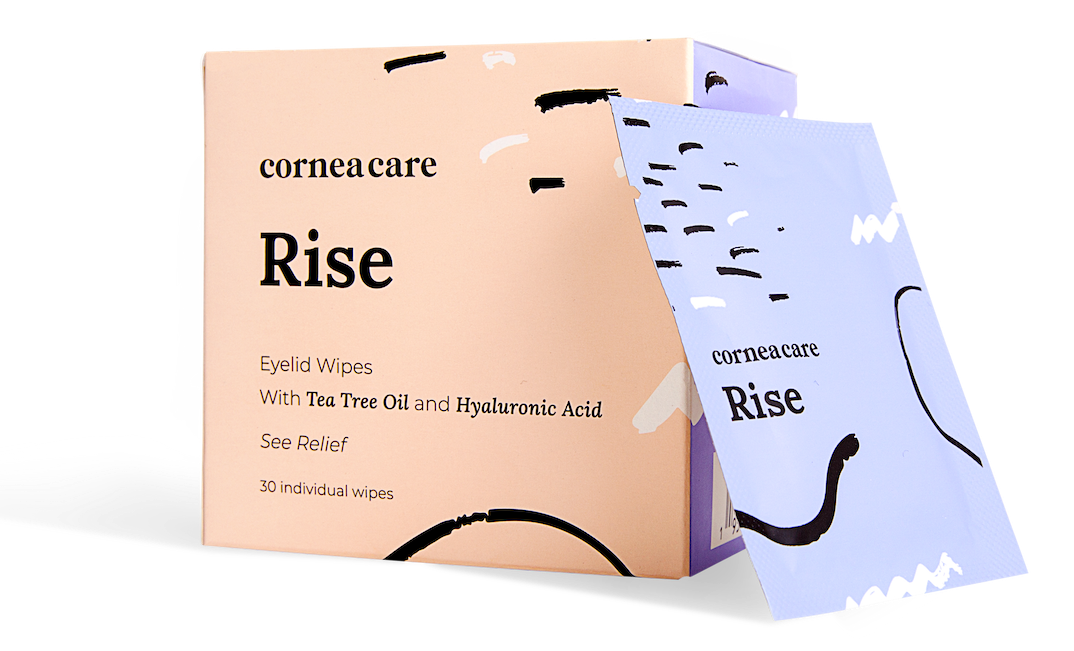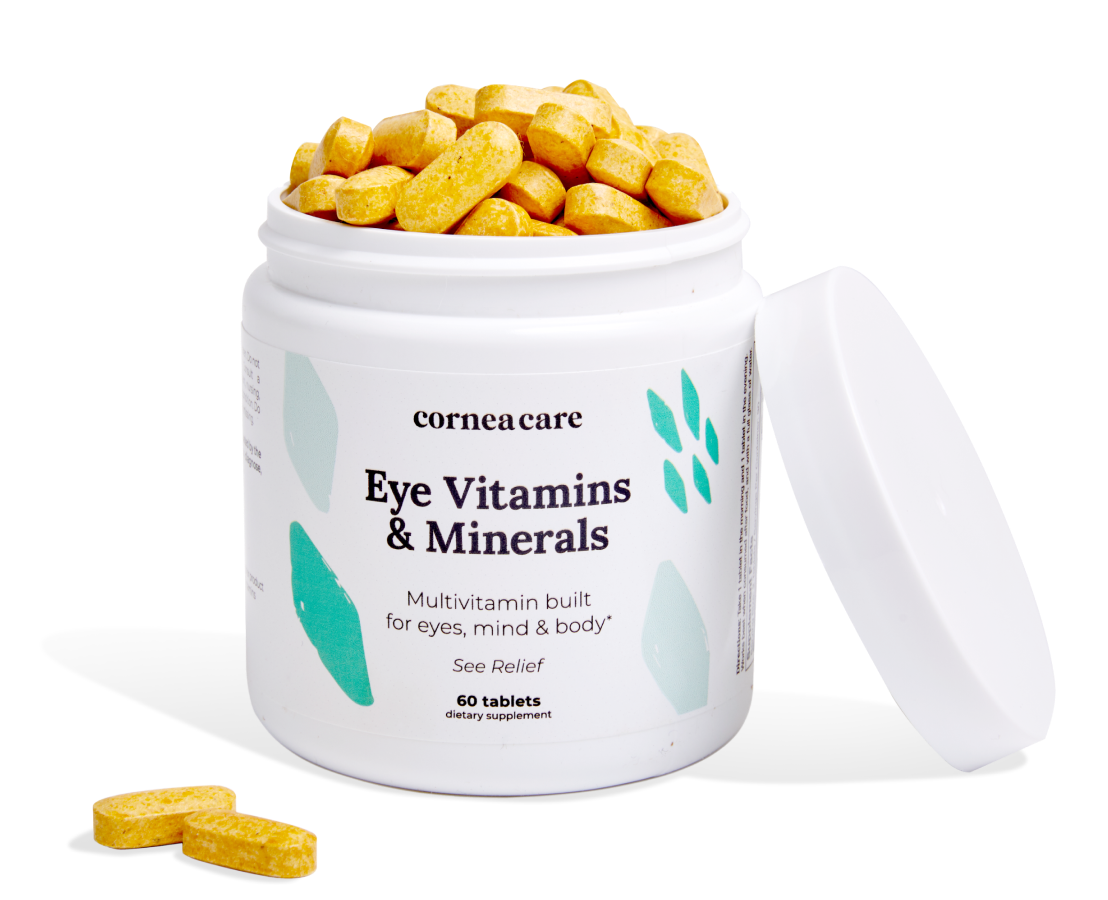Is there a Connection Between Cataracts and Headaches?
When it comes to health, we often focus on the most visible and common issues. But sometimes, it’s the less obvious culprits that can lead to discomfort and pain. Cataracts, a condition usually associated with vision problems, can also have surprising connections to headaches.
While the early stages of cataract formation may not trouble you much, as they grow you may experience an increase in challenging symptoms. In this article, we’ll delve into the connection between cataracts and headaches, and what you can do about it.
Key Points
- Cataracts are cloudy areas that form in the lens of your eye, leading to blurry vision, glare, and difficulty with daily activities.1
- While cataracts themselves do not directly cause headaches, they can lead to tension headaches and vision-related symptoms.2
- Cataract surgery offers substantial improvements in vision and potential relief from associated headaches.
Cataracts: A Closer Examination
Before we delve into the headache connection, let’s briefly cover what cataracts are. A cataract is a condition characterized by the clouding of the lens within your eye. The resulting blurry vision and problems with glare can significantly disrupt your daily activities, making routine tasks increasingly challenging.1
Cataracts often develop due to the clumping of proteins within the lens of the eye. These clouded areas can vary in size and location within the eye, affecting the clarity of your vision.1
While cataracts are commonly associated with the aging process, there are other forms of cataracts that can develop in children. Some cataracts may also be a result of eye trauma, surgical procedures, specific medications, or certain underlying medical conditions.
Cataracts typically progress slowly over several years, leading to a gradual decline in vision quality. The encouraging news is that making positive lifestyle changes and maintaining a healthy diet can help delay the onset of cataracts and potentially slow down their advancement. Furthermore, cataract surgery is a widely practiced procedure that restores the vision of millions of Americans each year.
How cataracts affect your vision
A natural product of the aging process, cataracts primarily affect your vision, leading to an array of symptoms, including:
- Blurred vision: Cataracts cause your vision to become increasingly blurred.1 Objects may appear hazy, and it may be challenging to read or recognize faces. You may find yourself more frequently updating your eyeglasses or contact lens prescription.
- Glare sensitivity: Bright lights can be particularly troublesome for individuals with cataracts. Car headlights at night, for instance, can appear dazzling and uncomfortable, causing significant glare.1
- Diminished color perception: Cataracts can lead to a noticeable change in your perception of color. Colors may seem less vibrant and appear faded, robbing the world of its visual richness.1
- Double vision: Cataracts can result in double vision in the affected eye. This condition can make it difficult to focus on objects, as two images overlap or appear side by side, causing visual confusion.1
- Halos around lights: Individuals with cataracts often experience halos around light sources, especially at night. These optical phenomena cause a circle or ring of light to surround objects, making them appear as if encased in a luminous halo.1
- Eye strain and discomfort: Ongoing efforts to compensate for deteriorating vision due to cataracts can lead to eye strain. Squinting, frequent blinking, and other manifestations of visual discomfort increase over time as your eyes work harder to see clearly.2
Given these vision-related symptoms of cataracts, it’s no surprise that cataracts can interfere with your daily life. But, can they cause headaches too?

Rise
Eyelid Wipes
Perfect for eye dryness, itching, burning, and crusting/flaking of eyelashes. Free shipping 📦
Try today - $25
The Link Between Cataracts and Headaches
While cataracts primarily affect your vision, they can indirectly lead to headaches as well. Here’s how:
- Straining to see: As cataracts progress, you may strain your eyes more often to see clearly.2 This strain can lead to tension headaches, a common type of headache caused by muscle tension in the head and neck.
- Squinting: Squinting is a natural response to poor vision caused by cataracts. It can create additional tension in the forehead and eye muscles, which may result in headaches.2
- Sensitivity to light: Cataracts can make your eyes more sensitive to light, causing discomfort that may lead to headaches, especially in bright environments.1
- Altered depth perception: Cataracts can impact depth perception, resulting in eye fatigue and potential headaches, especially during activities that require precise vision, such as driving or reading.
- Increased stress and anxiety: Coping with vision loss due to cataracts can be stressful and anxiety-inducing. Stress and anxiety are known triggers for tension headaches.
Treating Cataracts and Alleviating Headaches
The good news is that cataracts are treatable, and addressing them can potentially help relieve associated headaches. Here are some steps to consider:
Consult an eye care specialist
If you suspect you have cataracts or are experiencing vision problems or eye pain, make an appointment to see an eye doctor (optometrist or ophthalmologist). They can diagnose the condition and recommend appropriate treatment options.
Consider cataract surgery
The most common treatment for cataracts is eye surgery. During this surgical procedure, the natural lens of the eye is carefully removed and replaced with an artificial lens, commonly known as an intraocular lens (IOL).3
Cataract surgery can restore clear vision and alleviate factors contributing to headaches. Another promising benefit of cataract surgery is the marked improvement in night vision and a substantial reduction in the halos experienced around light sources, thus making it a welcome option for those grappling with these issues.
Manage headaches
If you’re experiencing headaches in conjunction with cataracts or other eye problems, consult a healthcare provider for headache management strategies. These may include lifestyle changes, stress reduction techniques, and the use of over-the-counter or prescription medications.
Protect your eyes

Multivitamin
Eye Vitamins & Minerals
A single multivitamin to address the nutritional needs of your eyes, mind and body. 📦 Free shipping.
Try today - $35
After eye surgery, it’s crucial to protect your eyes from harmful UV rays. Wear sunglasses and a wide-brimmed hat when you’re outdoors to reduce light sensitivity and prevent headaches.
You may also experience dry eyes as your eyes heal post-surgery. CorneaCare preservative-free artificial tears can help lubricate and soothe dry eyes.
Delaying the Onset of Cataracts
While it’s not possible to prevent cataracts entirely, you can take steps to delay the onset of this age-related condition. Maintaining a healthy lifestyle and protecting your eyes from various risk factors can help. Here’s a list of actions you can take to delay the onset of cataracts:3,4
- Wear sunglasses
- Quit smoking
- Manage diabetes
- Maintain a healthy diet including CorneaCare eye vitamins to fill any nutritional gaps
- Stay hydrated
- Control high blood pressure
- Use protective eyewear at work around hazards
- Limit alcohol consumption
- Stay active and maintain a healthy weight
- Seek treatment for glaucoma or other eye diseases
- Get regular eye exams
By adopting these lifestyle changes and protective measures, you can take proactive steps to delay the onset of cataracts and maintain healthy vision for years to come.
Can Cataracts Cause Headaches FAQ
Symptoms of worsening cataracts include blurred or cloudy vision, increased sensitivity to light, the appearance of halos around light sources, difficulty with night vision, and a gradual decline in visual clarity. It’s important to work with your eye doctor to manage and treat your symptoms, especially as they begin to interfere with your daily activities.
While cataracts themselves do not directly cause headaches, they can indirectly contribute to headaches. Strained eye muscles, squinting, light sensitivity, altered depth perception, and the stress associated with vision problems may lead to tension headaches. Other eye conditions such as uncorrected astigmatism and presbyopia can cause headaches.
If you suspect your headache is eye-related, consider factors such as visual strain, frequent squinting, eye discomfort, and changes in your vision. An eye exam by an optometrist or ophthalmologist can help determine if your headache is associated with an underlying eye condition, such as cataracts, refractive errors, or other eye problems.
Putting It All Together
While cataracts primarily affect your vision, the associated symptoms can indirectly lead to headaches. Strained eye muscles, squinting, sensitivity to light, and stress can all contribute to headache pain. However, the good news is that cataracts are treatable, and addressing this eye condition can potentially alleviate associated headaches.
If you’ve been experiencing headaches along with vision problems, don’t hesitate to consult an eye specialist. They can evaluate your condition and recommend appropriate treatment, which may include cataract surgery. By taking steps to improve your eye health, you can not only restore clear vision but also bid farewell to those nagging headaches, leading to a brighter, more comfortable future for your eyes and overall well-being.
What’s Next
Keep learning! We have some more resources for you about cataracts and headaches, and lots of other topics to help you take good care of your eyes on the Eye Health & Wellness blog.



